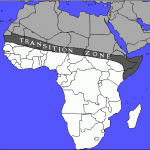I have run into a few people lately who were fairly certain that the population in Africa was going to be shrinking any day now because of the HIV epidemic that is sweeping through sub-Saharan Africa. Â While it’s true that there is an epidemic of HIV infections in that region of the country, and it is also true that HIV infections there tend to be less treated and more people tend to die at earlier ages from the infections, the populations in those countries are going to continue to grow rapidly over the coming decades for a couple of reasons.
One reason is the average woman in most sub-Saharan African countries produces 6 or more off-spring in the course of her life. That’s three children for every adult in the equation 1 + 1 = 6 is bound to cause an increase in population, even given the much higher rates of infant and toddler mortality and the growing AIDS crisis.
The other reason, and the reason more relevant to this discussion is the nature of the word “epidemic” – which really only means a contagious disease that spreads widely and rapidly through a population. Unfortunately, “widely” and “rapidly” aren’t very specific terms.
The Centers for Disease Control determines the “epidemic threshold” for various diseases by looking at how many people die from a particular disease over a particular period of time and comparing that statistic to historical rates of death from the same disease over the same period of time. In other words, it’s a lot of math and most people aren’t going to realize when that threshold has been met. Seasonal flu epidemics occur relatively often in the US, for instance, and the general public is rarely even aware of the situation, because to be an epidemic, a disease only has to spread to a statistically higher number of people than it usually does, and that can still be a fairly small number on the country-wide or global scale.

The incidence (occurence) of HIV infection among the population in sub-Saharan Africa (white part of the map) is staggering when compared to incidence in other parts of the world, but it is not sweeping through the entire population like a firebrand.
When you consider that there are only around 33.4 million cases of HIV infection in the world (and we’re nearing 7 billion people world-wide), and that almost two-thirds of these cases are found in the lower portion of Africa, you can see that HIV infection most certainly is an epidemic, but when you look at it on a percentage of the population scale, the numbers are a little less dooming.
It is estimated that 5-6% of the adult population is currently infected in sub-Saharan Africa. That means that 94-95% of the population does not have HIV at this time. New infections are still happening, but not at a rate that is in danger of sweeping the region anytime soon.
Keep in mind, even in your fiction, that MOST epidemics and pandemics (which are just epidemics that strike more than one continent on epidemic proportion) are not going to cause a large percentage of the population to die out. There have been some notable exceptions to this rule – particularly the flu pandemic in 1918, which killed 40-100 million people within one year (statistics weren’t kept closely during this period and estimates of human casualties vary widely). That is still only about 5% of the world’s population, and that flu reached just about every corner of the globe.
All that said, don’t let me dissuade you from sympathizing with Africa’s current plight. There are countries within Africa who are currently experiencing infection rates as high as 23-25% of the adult population – Botswana and Swaziland are in the lead. There is undoubtedly mass human suffering related to HIV infection in the African region at this time, and efforts to educate, reduce spread, and treat infected individuals are on-going through The World Health Organization and literally hundreds of initiatives from around the world.
Despite the continuing crisis, those efforts are working. In 2009, data from the World Health Organization indicated a 17% decline in new HIV infections compared to the previous 8 years.
